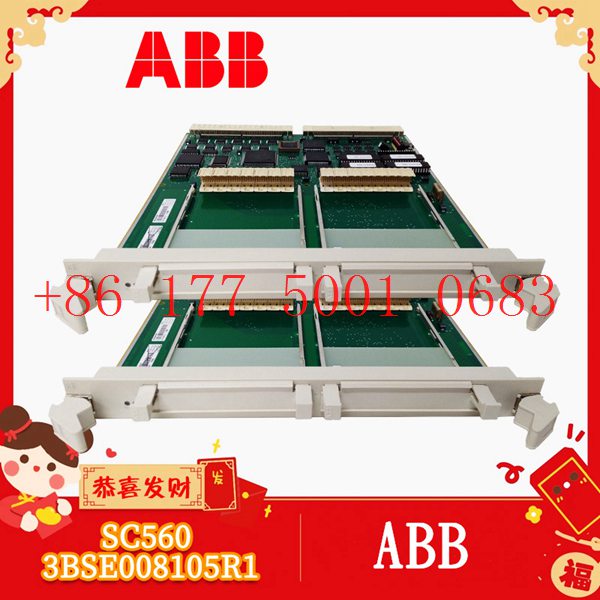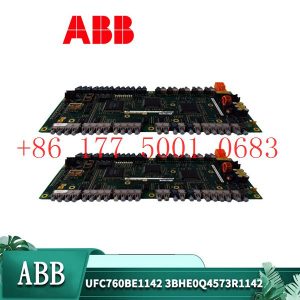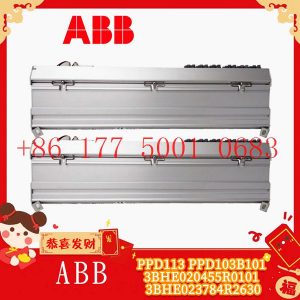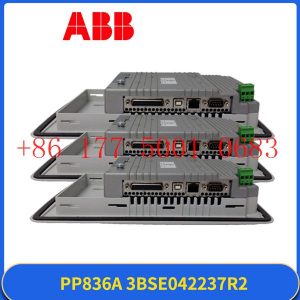Description
hardware flow control. It is an ideal choice in the field of industrial automation.
ABB robot virtual simulation explains the features of robotstudio
The main functional features of robotstudio are as follows: 1. CAD import; 2. Automatic path generation; 3. Program
editor; 4. Path optimization; 5. Automatic analysis of stretch ability; 6. Collision detection; 7. Online operation.
The competitive pressure in the industrial automation market is increasing day by day, and customers are demanding
higher efficiency in production to reduce prices and improve quality. Spending time testing or commissioning a new
product at the beginning of a new product is not feasible today because it would mean stopping existing production
to program the new or modified part. ABB”s
RobotStudio is built on ABB VirtualController. We can use it to easily simulate the on-site production process on the
computer, allowing customers to understand the development and organization of the
production process.
robotstudio features:
1. CAD import
RobotStudio can easily import data from various mainstream CAD formats, including IGES, STEP, VRML, VDAFS,
ACIS and CATIA, etc. Robot programmers can use these precise data to program robots with higher accuracy, thus improving product quality.
2. Automatic path generation
One of the most time-saving features in RobotStudio. By using a CAD model of the part to be processed, this function can automatically
generate the robot position (path) needed to track the machining curve in just a few minutes, a task that would normally take hours or even days.
3. Program editor
The program editor (ProgramMaker) can generate robot programs, allowing users to develop or maintain robot
programs offline in a Windows environment, which can significantly shorten programming time and improve program structure.
4. Path optimization
The Simulation Monitor is a visual tool for robot motion optimization, with red lines showing where improvements
can be made to make the robot operate in the most efficient way.
5. Automatically analyze stretching ability
Users can use this function to move the robot or workpiece arbitrarily until all positions are accessible
, and the work cell floor plan verification and optimization can be completed within minutes.
6. Collision detection
Collision detection function can avoid serious damage caused by equipment collision. After selecting
detection objects, RobotStudio can automatically monitor and display whether these objects will collide when the program is executed.
7. Online homework
Use RobotStudio to connect and communicate with real robots, and perform convenient monitoring,
program modification, parameter setting, file transfer, backup and recovery operations on the robot.
Excitation system ABB module 3HAC13063-3
Excitation system ABB module 3HAC13055-1
Excitation system ABB module 3HAC13039-2
Excitation system ABB module 3HAC13031-4
Excitation system ABB module 3HAC13031-3
Excitation system ABB module 3HAC12998-1
Excitation system ABB module 3HAC12978-1
Excitation system ABB module 3HAC12965-1
Excitation system ABB module 3HAC12928-1
Excitation system ABB module 3HAC12837-7
Excitation system ABB module 3HAC12738-1
Excitation system ABB module 3HAC12738-1
Excitation system ABB module 3HAC12707-4
Excitation system ABB module 3HAC12707-4
Excitation system ABB module 3HAC12677-1
Excitation system ABB module 3HAC12677-1
Excitation system ABB module 3HAC12670-1
Excitation system ABB module 3HAC12651-2
Excitation system ABB module 3HAC12609-3
Excitation system ABB module 3HAC12591-2
Excitation system ABB module 3HAC12532-1
Excitation system ABB module 3HAC12483-1
Excitation system ABB module 3HAC12475-6
Excitation system ABB module 3HAC12434-1
Excitation system ABB module 3HAC1236-1
Excitation system ABB module 3HAC12311-50
Excitation system ABB module 3HAC12271-2
Excitation system ABB module 3HAC12147-1
Excitation system ABB module 3HAC12146-4
Excitation system ABB module 3HAC12120-1
Excitation system ABB module 3HAC11928-1
Excitation system ABB module 3HAC11911-2
Excitation system ABB module 3HAC11819-1
Excitation system ABB module 3HAC1179-1
Excitation system ABB module 3HAC1177-1
Excitation system ABB module 3HAC11761-1
Excitation system ABB module 3HAC11720-1
Excitation system ABB module 3HAC11668-1
Excitation system ABB module 3HAC1164-1
Excitation system ABB module 3HAC11601-1
Excitation system ABB module 3HAC1150-1
Excitation system ABB module 3HAC11488-1
Excitation system ABB module 3HAC11482-1
Excitation system ABB module 3HAC11283-2
Excitation system ABB module 3HAC11282-2
Excitation system ABB module 3HAC11282-1
Excitation system ABB module 3HAC11068-1
Excitation system ABB module 3HAC11060-1
Excitation system ABB module 3HAC1103-1
Excitation system ABB module 3HAC10996-1
Excitation system ABB module 3HAC10939-8
Excitation system ABB module 3HAC10847-1
Excitation system ABB module 3HAC10847-1
Excitation system ABB module 3HAC10834-1
Excitation system ABB module 3HAC10828-16
Excitation system ABB module 3HAC10828-15
Excitation system ABB module 3HAC10814-1
Excitation system ABB module 3HAC1079-1
Excitation system ABB module 3HAC10746-7
Excitation system ABB module 3HAC10746-6
Excitation system ABB module 3HAC10674-1
Excitation system ABB module 3HAC10592-1
Excitation system ABB module 3HAC10583-7
Excitation system ABB module 3HAC10583-5
Excitation system ABB module 3HAC10583-4
Excitation system ABB module 3HAC10583-3
Excitation system ABB module 3HAC10583-2
Excitation system ABB module 3HAC10583-16
Excitation system ABB module 3HAC10583-14
Excitation system ABB module 3HAC10583-12
Excitation system ABB module 3HAC10557-1
Excitation system ABB module 3HAC10543-1









Reviews
There are no reviews yet.